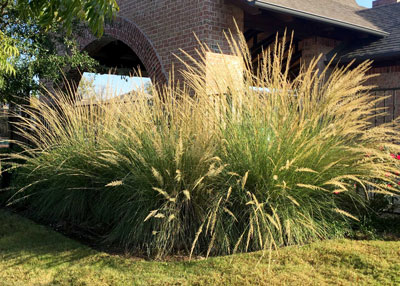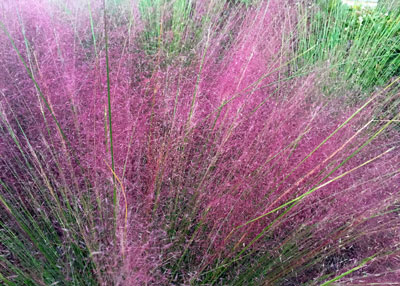Beauty Runs in this Family
Technically, we’re fine-tuning this to a group of plants that’s much smaller than a plant “family.” These are both grasses, but that’s the largest plant family in the world. Beauty runs in this genus, Muhlenbergia.
These are native Texas grasses that have received wide acclaim in the past 30 or 35 years in the Texas landscaping trade. Of all the ornamental grasses (which I feel we are over-using in many cases), these two really stand out in my eye.

Photo: Lindheimer muhly grass is handsome native perennial for Texas.
Muhlenbergia lindheimeri, or Lindheimer’s muhly, is native from the Edwards Plateau in the Texas Hill Country southward into Mexico. It’s adapted to almost all of the state provided it has full sunlight, ample room for its 4- or 5-foot height and width and good drainage. I’ve always looked at it as a substitute for the much larger/much coarser pampasgrass. It is a perennial bunch grass that usually appears as masses of individual clumps rather than one massed bed.
Here is information on Lindheimer’s muhly from the Lady Bird Johnson Wildflower Center in Austin.

Photo: Gulf muhly, also native to Texas, is one of the few pink-flowering grasses.
Muhlenbergia capallaris, or Gulf muhly, is native from the Northeast and throughout the eastern half of the U.S. south into Mexico and Central America. It, too, requires full or nearly full sunlight, loose and well-draining soils. The mature plants bloom at 18 to 27 inches tall and wide. Its showy pink seed heads appear in mid-fall and persist into the winter. It is also a perennial grass forming graceful beds of billowing leaves.
Here is information on Gulf muhly from the Lady Bird Johnson Wildflower Center in Austin.
